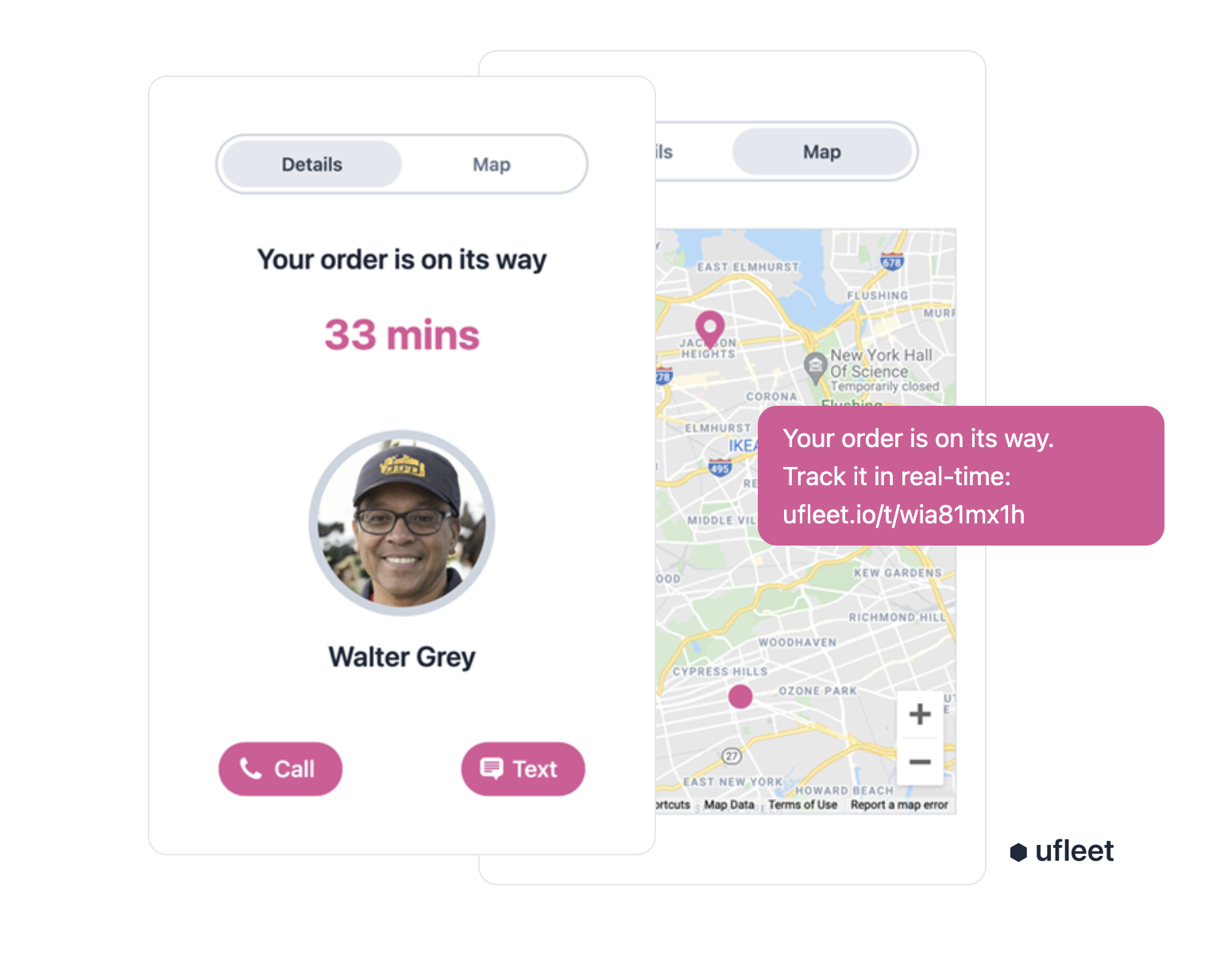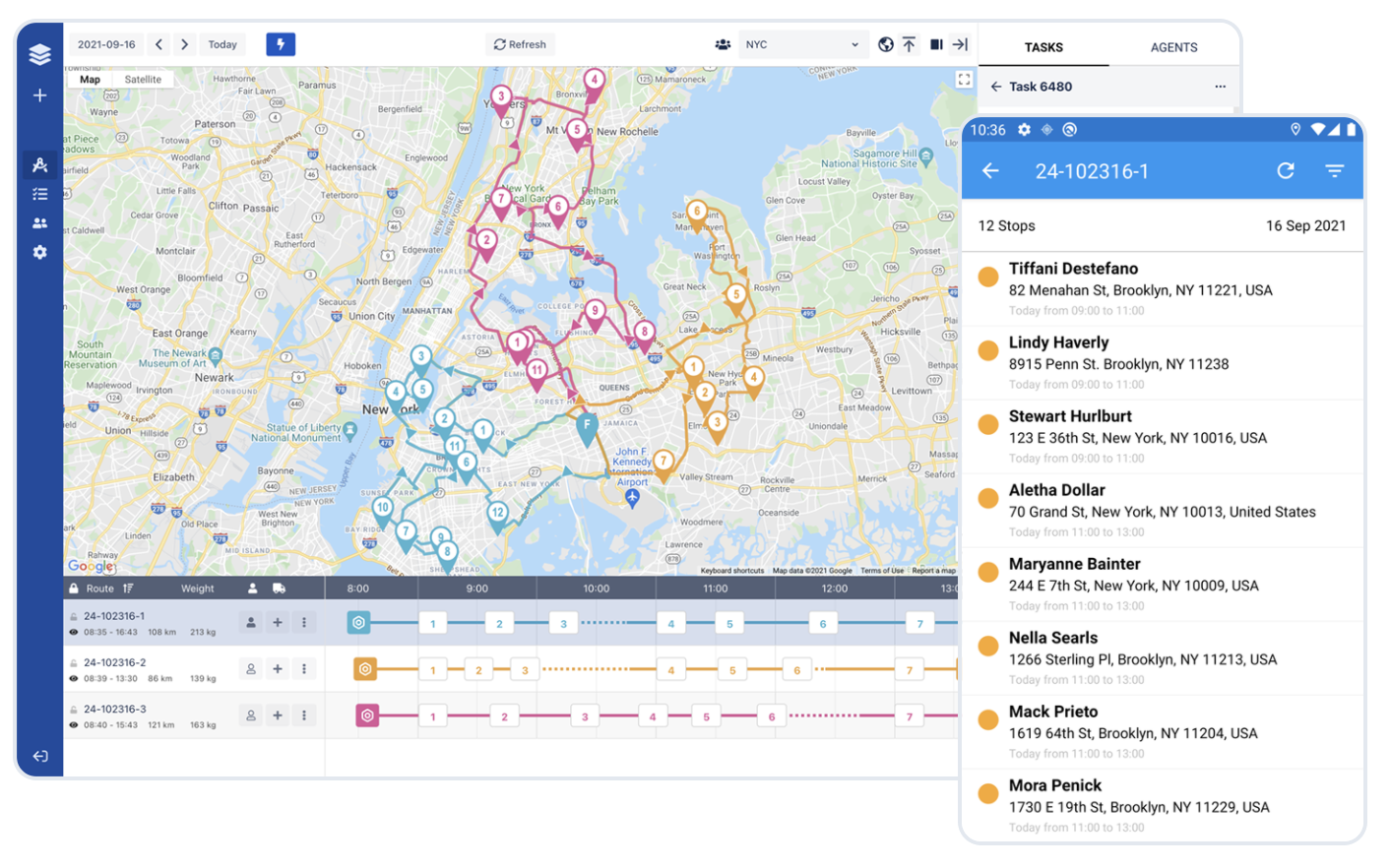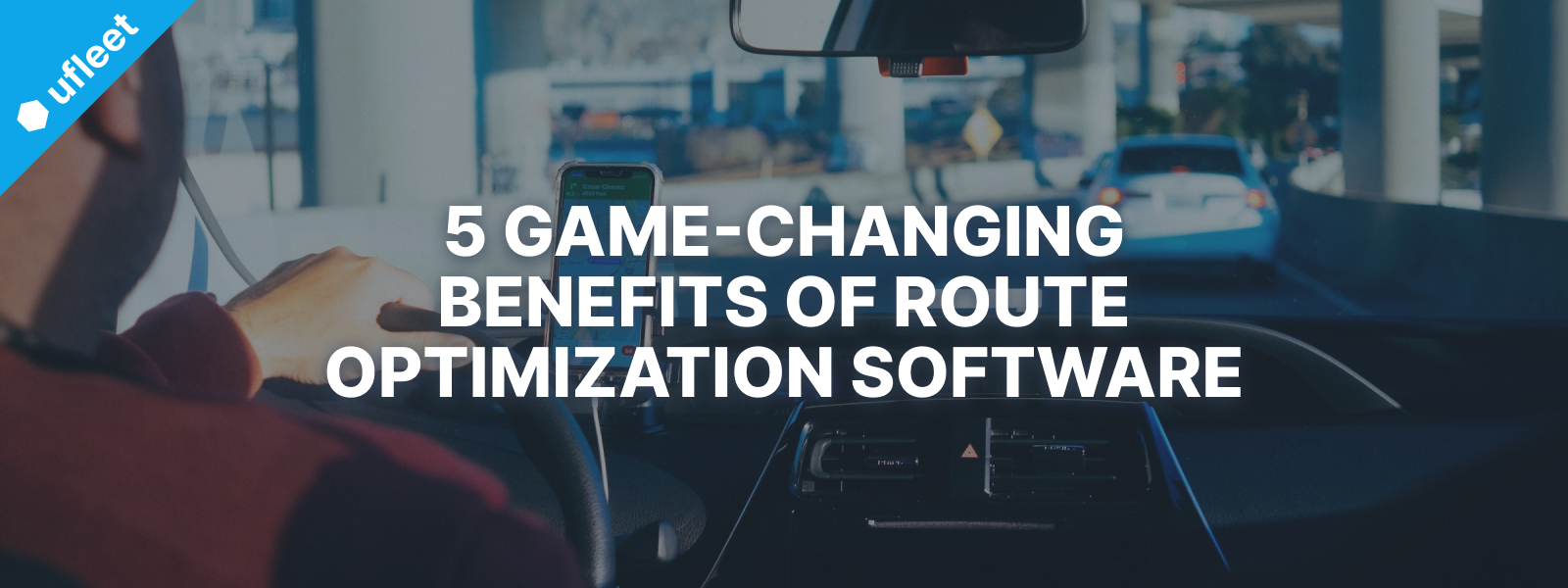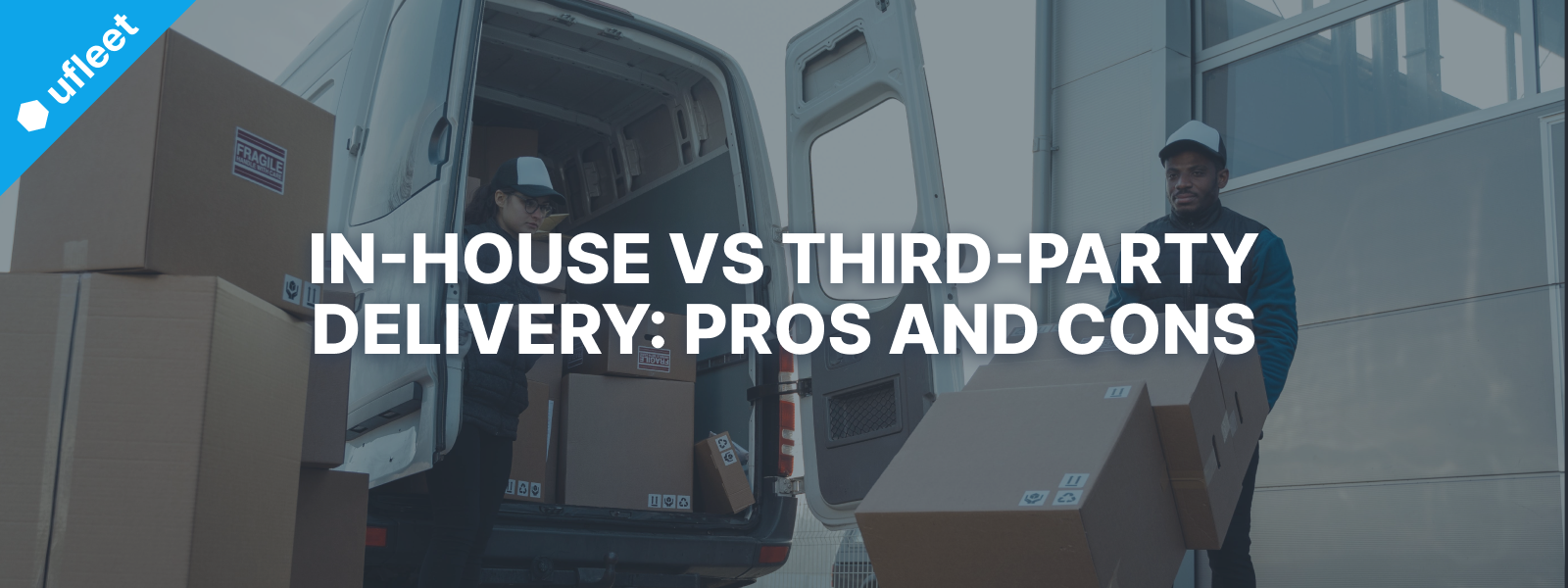Real-time delivery tracking emerges as a critical solution, bridging the gap between customer expectation and reality.
Real-Time Tracking is Your Key to Successful Deliveries in 2025
As an e-commerce retailer, have you ever been bombarded with questions from customers about the status of their delivery? Or had to deescalate their frustration because their package was delayed?
These scenarios indicate a serious challenge in the world of e-commerce: the gap between customer expectations and reality when it comes to deliveries. This huge discrepancy often leads to frustration, eroding trust, and might even drive customers away.
There's something that bridges this gap, though—it's real-time delivery tracking. Nowadays, it's a critical feature rather than a nice-to-have luxury. It builds a foundation of credibility and trust and helps to turn first-time buyers into returning customers.
In this post, you'll learn about the rising customer expectations and how real-time delivery tracking can help you meet them. Ultimately this will help you strengthen your brand reputation and build lasting customer loyalty.
Here's a quick summary of the topics we'll cover:
- What drives the need for real time tracking
- Understanding real-time delivery tracking
- Benefits of delivery tracking
- The success story of OBI Poland
- FAQ
What drives the need for real time tracking
In recent years, customer expectations around delivery services has dramatically increased and transformed the landscape of e-commerce and logistics.
Customers demand fast deliveries — often within the same day. Moreover, they want a seamless, transparent, and highly responsive delivery experience. Here are the main factors that drive the need for real time tracking.
Demand for speedy deliveries
The speed of delivery is a significant factor for the rising customer expectations. According to a study, 86% of customers define "fast delivery" as receiving their orders within two days or less, and 58% are willing to pay extra for the privilege of expedited delivery.
This expectation has set a new benchmark for e-commerce retailers and logistics providers who need to deliver faster and hence to plan their routes more efficiently.
That's where delivery route optimization comes in to help. It's a critical process that picks the shortest and most efficient routes to make a series of deliveries. As a result, it decreases the time for delivery, lowers total mileage, and decreases delivery costs. It ultimately allows not only to meet the demand without compromising profitability or quality, but also to improve them.
Where is my order (WISMO)
The certainty of knowing where your order is a fundamental customer expectation. The customer desires not just visibility into the delivery process but also the ability to interact with it. This includes:
- real-time updates on order status
- the location of the delivery vehicle
- an accurate estimate of the delivery time window
- seamless communication with the delivery driver
- notifications and updates on delays or other changes
This level of engagement empowers customers and gives them a sense of control and assurance.
And believe me or not, but while I'm writing this post I'm experiencing the frustration of not knowing where my order is. I'm expecting a courier who had to be at the address around 30-40 minutes ago and still hasn't arrived.
I don't know why they are late, when my package will be delivered and who to contact to find out. I had to search for the phone number of the logistics company in Google, call them and explain to the dispatcher my case. Then the lady had to call the delivery guy, then she had to call me back to let me he will be late with 20 more minutes...
Sounds familiar? I bet it does.
Issues like this are what real time delivery tracking addresses.
This is why real-time delivery tracking is precious. pic.twitter.com/AgU2V6Qcvi
— ufleet (@ufleetio) February 27, 2024
Failed deliveries
Failed deliveries are a critical pain point for businesses and customers, with the cost of a failed delivery averaging $17.20 per order. It's both a logistical challenge and a direct threat to customer satisfaction and brand loyalty.
The reasons for a failed delivery range from incorrect addresses, delays, no one was at the address, and more—each contributing to increased costs for the retailer and eroding customer trust.
Efficient route optimization, real-time tracking, and flexible delivery options are some of the ways to decrease or eliminate failed deliveries.
e-Commerce is on the rise
Experts predict that e-commerce global sales will hit $8 trillions by 2027 and $6.48 trillions by 2029. For comparison, in 2023 e-commerce revenue was $5.7 trillions with a record high of almost $1 trillion from holiday shopping.
This increase in demand puts additional pressure on delivery networks to perform flawlessly. More deliveries mean more opportunities for delays, errors, and customer dissatisfaction. It also requires more efficient delivery processes.
In this context, the ability of a delivery service to adapt and respond to the rising pressure is directly linked to its ability to satisfy customer expectations.
Understanding real-time delivery tracking
Real-time delivery tracking is a pivotal technology reshaping the delivery experience, providing customers and businesses with unprecedented transparency and control. Here's a deeper dive into understanding this transformative feature.
What is real-time delivery tracking
Real-time delivery tracking is a system that allows both customers and businesses to see the exact location of a delivery vehicle and the status of the delivery at any given moment.
This technology is facilitated through GPS tracking and provides live updates on:
- the vehicle's position
- delivery route
- estimated time of arrival (ETA)
The information is sent directly to a customer's device or a central control dashboard.
Key components of real-time tracking
There are a few basic components of quality real-time tracking:
- Live location updates
- Estimated time of arrival (ETA)
- Direct communication
- Delivery status notifications
The live location updates use GPS technology to offer continuous tracking of the delivery vehicle's current position.
The ETA calculates and regularly updates the expected delivery time based on current location, traffic conditions, and route changes.
Direct communication enables customers to contact the delivery driver or customer support through the tracking interface. It also facilitates real-time communication for any necessary adjustments or instructions.
The delivery status notifications serve as automated alerts and updates to customers about the status of their delivery.

Delivery tracking and customer experience
Real-time tracking significantly improves the customer experience.
It leads to increased transparency and trust in the brand. Knowing the status of your delivery reduces the anxiety and uncertainty associated with waiting for orders.
In addition, the ability to interact with the delivery process and receive timely updates directly correlates with higher customer satisfaction levels.
Last but not least, it results in reduced customer service inquiries related to order status and time of delivery.
Benefits of delivery tracking
Real-time delivery tracking is a transformative solution in the delivery sector. It offers multiple benefits that enhance customer experience and streamline operational efficiency:
Benefits for customers
- Enhanced transparency: It fosters trust, reduces the anxiety of waiting, and makes the delivery experience more reassuring and satisfying.
- Increased control and convenience: Customers can easily communicate last-minute instructions which makes delivery adaptable to the dynamic needs of customers.
- Improved delivery accuracy: Real-time ETA helps customers plan their day around the delivery. It also significantly reduces the risk of missed deliveries.
Benefits for businesses
- Reduced support inquiries: This reduction allows customer service teams to focus on more complex issues, improving overall service quality.
- Enhanced customer loyalty: Satisfied customers are more likely to become repeat buyers and even brand advocates.
- Updates on delays and issues: This allows businesses to notice or sometimes predict delays or other problems and act accordingly.
Real-time tracking is no longer a luxury in last mile deliveries. Order status, location of the delivery vehicle plus an estimate of the delivery time - that's all a must. Wondering why so many retailers still don't get it and leave you in the dark.
— ufleet (@ufleetio) February 27, 2024
The success story of OBI Poland
OBI Poland, a major DIY retailer in Poland, faced challenges in providing a transparent and efficient customer delivery experience.
Store managers, logistic partners, and the customer support team had limited visibility into the delivery process, which led to uncertainties and inefficiencies that impacted customer satisfaction.
In 2020, OBI Poland adopted route optimization software to optimize routes, provide real-time tracking, and facilitate communication between customers and delivery personnel.
This allowed them to improve transparency and customer satisfaction. Customers gained the ability to track their deliveries in real-time on any device without needing to log in on the company’s website. This level of convenience led to:
- 30% increase in Net Promoter Score (NPS)
- 39% less WISMO calls
- 54% decrease in unhappy customers
It also enhanced service quality — the visibility and control provided allowed OBI Poland to manage its fleet more effectively. In addition, it ensured that deliveries were made on time, and any potential issues were addressed proactively.
FAQ about real-time delivery tracking
What is real-time delivery tracking?
It's a system that allows customers and businesses to see the live location of delivery vehicles and the ETA of their orders.
How does real-time delivery tracking improve customer satisfaction?
It enhances transparency, reduces anxiety over delivery status, and allows customers to plan their day around the delivery.
Can real-time tracking reduce operational costs for businesses?
Yes, by optimizing routes and reducing the volume of customer service inquiries related to order status.
Can customers communicate with drivers through real-time tracking systems?
Yes, customers can directly contact the delivery driver for real-time updates or adjustments.
Can real-time delivery tracking help with failed deliveries?
Yes, by providing accurate ETAs and direct communication, delivery tracking significantly reduces the chances of missed deliveries.
What is the ROI of implementing real-time delivery tracking?
It increases delivery efficiency, and improves customer satisfaction and retention, which leads to higher overall profitability and brand loyalty.
If you found this post helpful, subscribe below to receive similar insights straight in your inbox.❤️✉️
Never miss a post
You may also like…
You too can reduce costs and improve efficiency with Ufleet
- plan and optimize delivery routes
- manage and empower drivers
- enhance customer experience
- make data-driven business decisions
We’d love to learn about your challenges.
Leave your email and we’ll get back to you.





